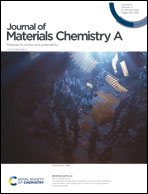Combined treatment of phonon scattering by electrons and point defects explains the thermal conductivity reduction in highly-doped Si
Abstract
The mechanisms causing the reduction in lattice thermal conductivity in highly P- and B-doped Si are looked into in detail. Scattering rates of phonons by point defects, as well as by electrons, are calculated from first principles. Lattice thermal conductivities are calculated considering these scattering mechanisms both individually and together. It is found that at low carrier concentrations and temperatures phonon scattering by electrons is dominant and can reproduce the experimental thermal conductivity reduction. However, at higher doping concentrations the scattering rates of phonons by point defects dominate the ones by electrons except for the lowest phonon frequencies. Consequently, phonon scattering by point defects contributes substantially to the thermal conductivity reduction in Si at defect concentrations above 1019 cm−3 even at room temperature. Only when, phonon scattering by both point defects and electrons are taken into account, excellent agreement is obtained with the experimental values at all temperatures.



 Please wait while we load your content...
Please wait while we load your content...